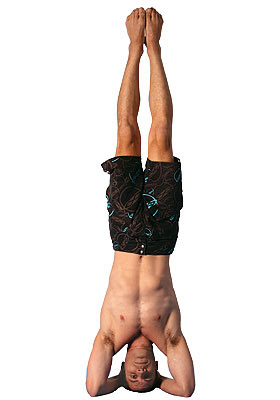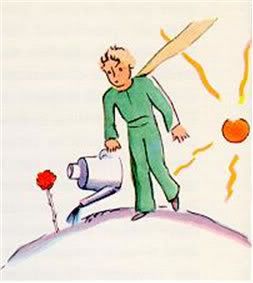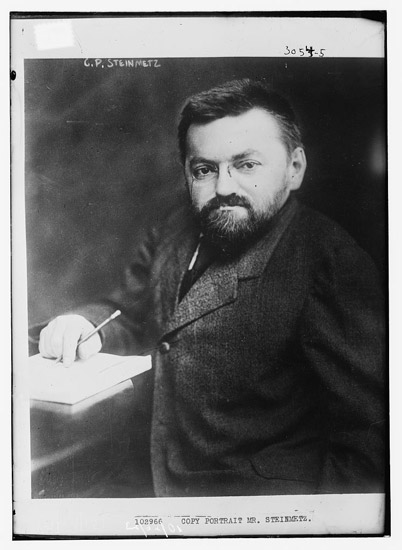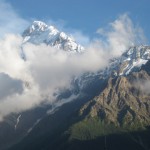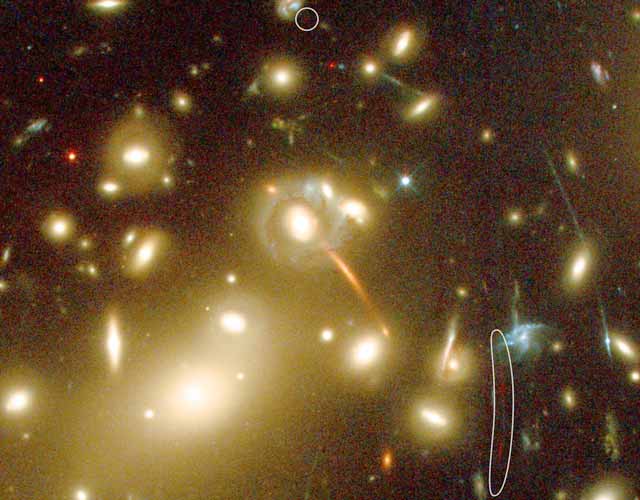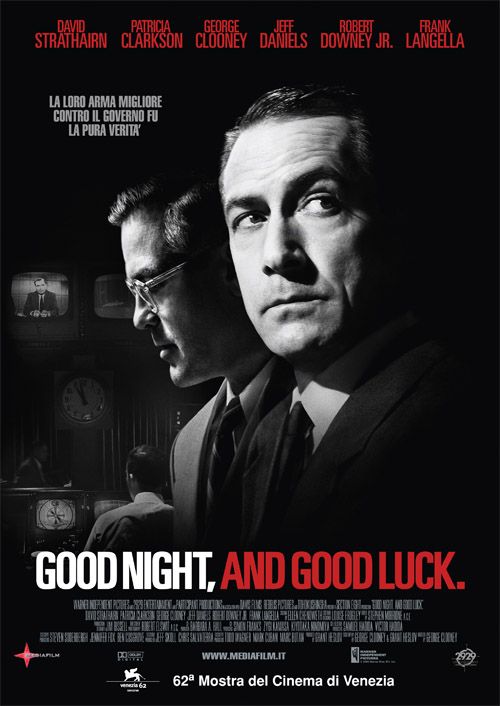

|
What is possible In November, 2008, just after Obama’s election, the Yes-men handed out an optimistic prophesy for the world a few months down the road. Video about the NYTimes parody Yes-men web site |
1 April 2013
|
|
We’re happier when we are fulfilling our mission, offering our unique gifts Miracles are not the intercession of an external, divine agency in violoation of the laws of nature. A miracles is something impossible from an old understanding of reality, and possible from a new one. — Charles Eisenstein (from TEDx talk) The world around us is built from a story. By acting from a different story, we disrupt the psychic substructure of our mythology, and we offer an alternative. Eisenstein closes by reminding his audience that we are here to serve and to offer our gifts, and inviting his audience to “bow more deeply into that mission. If you do it, I predict that you will experience an unexpected opportunity to act on that intention. It will be just at the edge of your courage, but not past it.” |
2 April 2013
|
|
Information wants to be free The Digital Public Library of America, to be launched on April 18, is a project to make the holdings of America’s research libraries, archives, and museums available to all Americans—and eventually to everyone in the world—online and free of charge. Speaking broadly, the DPLA represents the confluence of two currents that have shaped American civilization: utopianism and pragmatism. The utopian tendency marked the Republic at its birth, for the United States was produced by a revolution, and revolutions release utopian energy—that is, the conviction that the way things are is not the way they have to be. When things fall apart, violently and by collective action, they create the possibility of putting them back together in a new manner, according to higher principles... — read more from an article by Robert Darnton in the NYReview |
3 April 2013
|
|
Full faith and credit Four years ago, a mysterious, anonymous geek created a new form of money, and – miraculously – it has caught on. Perhaps the best innovation of Mr Nakamoto was to build a system in which accounting for who owns which bitcoin is distributed over thousands of high-power computers. He enlisted all those computers by distributing bitcoins to the winners of computational contests. Each bitcoin is awarded to the first computer that turns in a correct answer to a math problem that requires a great deal of number crunching. A new such problem is put out there every 10 seconds. This is inspiring because it represents a decentralization of the power to create money. At one time, money was created by the King, and then by democratic governments – subject to corruption, but ultimately responsible to the people. Then, Western democracies ceded this power and control to central banks, which now have a chokehold on Western, capitalist economies. As the central banks get deeper into trouble, the price of bitcoins has been bid up of late, from pennies in 2009 to $70 as of this week. That a number of panicked Europeans appear to have reckoned the wildly volatile, vulnerable, and tiny bitcoin market a preferable alternative to their own banking system...illustrates the broader collapse of trust that is threatening the world of global banking and fiat money. The weakness in existing currencies stems from lack of faith in institutions—particularly central banks, which are often in league with commercial and investment banks. When a government bails out a failed bank or insurance company—in essence, by printing money—the net effect is that the currency as a whole is debased, in favor of a few and at the literal expense of everyone else, which amounts to a fair description of today’s global financial system. Hence the sudden appeal of bitcoins, which appear, for the moment, at least, to be immune to the machinations of inept or crooked bankers and politicians. — Read more from the New Yorker |
4 April 2013
|
|
The fourteenth precept Do not mistreat your body. Learn to handle it with respect. Do not look on your body as only an instrument. Preserve vital energies (sexual, breath, spirit) for the realisation of the Way. (For brothers and sisters who are not monks and nuns:) Sexual expression should not take place without love and commitment. In sexual relations, be aware of future suffering that may be caused. To preserve the happiness of others, respect the rights and commitments of others. Be fully aware of the responsibility of bringing new lives into the world. Meditate on the world into which you are bringing new beings. — #14 of the Fourteen Precepts of Thich Nhat Hahn Focusing just on the first sentence: Pain and pleasure offer some guidance and feedback from moment to moment about whether we are nurturing our bodies or damaging them.
But there are pleasures that are bad for us in the long run, and discomforts that are good for us in the long run, and only with knowledge
and discipline can we care for ourselves optimally.
|
5 April 2013
|
|
Early Schumann With the 18 short piano pieces of Davidsbündlertänze (Op 6), 27-year-old Robert Schumann laid down the gauntlet for a new era of romantic piano music. The name comes from an imaginary league of ‘Davids’ set to fight the cultural straight-laced cultural Goliath of the day. Listen to Andras Schiff play the whole set. (15 minutes in is my favorite, #12. It’s very short.) |
6 April 2013
|
|
I have laid the perfect foundation for wonders yet to be revealed. — Josh Mitteldorf Perhaps that is because miracles spring fully formed from the void, and need no foundation. |
7 April 2013
|
|
Better to do nothing than to waste your time. |
8 April 2013
|
|
Wizard of Schenectady He stood just four feet tall, his body contorted by a hump in his back and a crooked gait, and his stunted torso gave the illusion that his head, hands and feet were too big. But he was a giant among scientific thinkers, counting Albert Einstein, Nikola Tesla and Thomas Edison as friends, and his contributions to mathematics and electrical engineering made him one of the most beloved and instantly recognizable men of his time. — Read more from Smithsonian Mag Charles Steinmetz, born this day in 1865, came to America from Poland at a time when socialists were persecuted in Europe, and freer here to speak their minds. America was electrifying, Steinmetz approached industrial electrical engineering as a science, rather than an experimental art. Imaginary numbers had been known to mathematicians for hundreds of years, and Leonhardt Euler had discovered his magical formula eix=cos(x) + i sin(x) in the previous century. But Steinmetz was the first to find practical uses for imaginary numbers, in computing the phase lags of alternating current. |
9 April 2013
|
|
Primary Wonder Days pass when I forget the mystery. — Denise Levertov |
10 April 2013 |
|
Two centuries before M.C. Escher ...confounded us with his optical illusions and play on perspective, William Hogarth (1697-1764) created Satire on False Perspective. Hogarth was a British painter and engraver sometimes credited with beginning the tradition of sequential art in Western culture due to his series of paintings depicting the rise and fall of a dandy, A Rake’s Progress. Complicated methods of using perspective to create an illusion of 3-dimensions in 2-dimensional art had been mastered (again) in Renaissance art a few centuries earlier. As well as a painter, Hogarth was something like a political cartoonist and satirist in his day. Here, in his engraving Satire on False Perspective are a number of visual absurdities. — read more in a Scientific American article Click on the image at right to see a larger version |
11 April 2013 |
|
Arcology Paolo Soleri coined this term for the pursuit of architectural design that is consonant with ecological harmony. “Arcology recognizes the necessity of the radical reorganization of the sprawling urban landscape into dense, integrated, three-dimensional cities in order to support the complex activities that sustain human culture. The city is the necessary instrument for the evolution of humankind.” Starting in the 1970s, Soleri engineered a model city in Arizona which embodies principles that support human community, efficient transportation, and consonance with nature. Could the American dream be reconsidered and reinvented? Arcology seeks to embody a “Lean Alternative” to hyper consumption and wastefulness through more frugal, efficient, smart, yet elegant city designs. Leanness is inherently obtainable via the miniaturization intrinsic to the Urban Effect. |
12 April 2013
|
|
Learning from the Netherlands about bicycle culture How did the Netherlands get almost everyone out of cars and onto bikes? No, it’s not the hash, and it’s not something particularly about the Dutch character. It has a lot to do with intention, planning and execution. Lessons we all can learn for a cleaner environment and a saner lifestyle. — read more at Who-What-Why |
13 April 2013
|
|
At the threshold of this life Listen to Andrea Clearfield’s cantata Tse Go La, based on traditional music and culture of Tibet. (Scroll down to performance last week from University of Texas, Austin, under Dan Welcher) Bare threshold of this life |
14 April 2013
|
|
In honor of Harriet Mitteldorf’s Birthday How long have I carried this burden of feeling Going forth, then, what project more worthy could be — Josh Mitteldorf Epilogue for cynics |
15 April 2013
|
|
Hungarian traditional sound in the 20th Century Listen to Csűrdöngölő Op 20 for strings standing up, |
16 April 2013
|
|
Spring If you are old, — Kim Empson |
17 April 2013
|
|
To health ---that I might be grateful for what I have been given, and dedicate my gifts to a good purpose. We can only be said to be alive in those moments when our hearts are conscious of our treasures. |
18 April 2013
|
|
Healing the earth while increasing food supply This is an inspired video, packed with data - rather difficult to summarize, because Savory makes a detailed case for a counter-intuitive strategy for land management and CO2 abatement. I encourage you to watch the video, because my summary doesn’t do it justice (Incidentally - this message resonates with me because I heard the same theme from a Brazilian researcher just a year ago when I was visiting Univ of Sao Paulo. She seemed quite credible and competent, but sometimes it takes time for a new idea to sink in.) 2/3 of the earth's land surface is desert or becoming desert. The impact on global warming is even larger than the CO2 emissions from all uses of fossil fuels combined. It is possible to rescue this land, to restore the basis for prosperous ecosystems. The conventional wisdom was that desertification is caused by livestock overgrazing. But in fact, desertification has been going on since long before the human population explosion, and where it was tried, elimination of grazing animals has actually made the problem worse. The solution is to manage livestock to mimic natural processes. In nature before man, grazing animals moved in great, dense herds, where they found safety in numbers from predators. The herds denuding the land, then quickly moved on. In a season, they turned grasslands to dung (fertilizer), and then left the land to recover its productivity before coming back (in herds). It sounds like hit-and-run overexploitation, but it seems that this is the use to which fast-growing grasslands and rainforest are adapted best. Where livestock is managed this way, the earth recovers from desertification, and can sustainably support large populations of livestock and humans. |
19 April 2013
|
|
Episodes of stress promote growth of new neurons in the brain, Much research has demonstrated that chronic stress elevates levels of glucocorticoid stress hormones, which suppresses the production of new neurons in the hippocampus, impairing memory. This is in addition to the effect that chronically elevated levels of stress hormones have on the entire body, such as increasing the risk of chronic obesity, heart disease and depression. Less is known about the effects of acute stress, Kaufer said, and studies have been conflicting. To clear up the confusion, Kirby subjected rats to what, to them, is acute but short-lived stress – immobilization in their cages for a few hours. This led to stress hormone (corticosterone) levels as high as those from chronic stress, though for only a few hours. The stress doubled the proliferation of new brain cells in the hippocampus, specifically in the dorsal dentate gyrus. — from a UCBerkeley press release. Read more |
20 April 2013
|
|
Always ...I am blessed Every once in a while ...I know it. — Josh Mitteldorf |
21 April 2013
|
|
Kant’s cosmology After the Renaissance Man, before knowledge became so fragmented, there was Immanuel Kant, born this day in 1724. 150 years before Hubble, Kant proposed that the Milky Way was one galaxy among many. Kant (who had a strong background in mathematics and physics) suggested, and astronomical measurements of stellar distances and line-of-sight velocities later confirmed, that the appearance of the night sky can be better explained if we posit that the visible stars belong to a huge, disk-like stellar system similar to the solar system, with the Sun circling a distant center in the Milky Way, just as Earth circles the Sun. He went on to argue, again on sound scientific grounds, that the tiny patches of light that astronomers called “nebulae” were stellar systems comparable to our own, too distant for contemporary telescopes to resolve into stars. Finally, he speculated that the astronomical universe was likewise a flattened, centrally condensed, self-gravitating system in which stellar systems play the same role as stars in stellar systems and planets in the solar system. — from a new ms by David Layzer |
22 April 2013
|
|
Truth is too simple for words |
23 April 2013
|
|
from the 9th Duino Elegy Why, if it's possible to come into existence Oh, not because of Happiness and because what is here seems to need us, this vanishing world that concerns us strangely — us, the most vanishing of all. Once for each, only once. Once and no more. And we, too: just once. Never again. But to have lived this once, even if only this once, to have been of earth — that cannot be taken from us. — Rainer Maria Rilke, tr Joanna Macy Read the rest |
24 April 2013
|
|
Edward R Murrow The last honest TV anchor was full of wisdom that seems perfectly aimed at the politics of 2013. ““No one can terrorize a whole nation, unless we are all his accomplices.”” “We cannot defend freedom abroad by deserting it at home.” “The obscure we see eventually. The completely obvious, it seems, takes longer.” — Edward R Murrow was born this day in 1908 “Anyone who isn't confused really doesn't understand the situation.” |
25 April 2013
|
|
A sort of Pascal’s wager for scientific humanists It is perfectly possible that the truth is beyond our reach, in virtue of our intrinsic cognitive limitations, and not merely beyond our grasp in humanity’s present stage of intellectual development. But I believe that we cannot know this, and that it makes sense to go on seeking a systematic understanding of how we and other living things fit into the world. — Thomas Nagel |
26 April 2013
|
|
Sergei Prokofiev, born this day in 1891, was not considered a prodigy in the way that Mozart or Mendelssohn or even George Szell, his contemporary, were prodigies. Still, by the age of 12 he had composed four operas, a symphony, and about 70 small piano pieces. That year, he became the youngest student ever to attend the Moscow Conservatory. Through his life, he wished to compose abstract (atonal) music in the style that was gaining an intellectual following in Europe; but the Soviet government kept pushing him in the direction of appeal ing music for the masses. The result was that Prokofiev ended up writing some of the most enduring, deep and well-crafted movie music of all time, and orchestral works of unparalleled popular appeal. Listen to the fourth movement of his Flute Sonata, performed by James Galway and Martha Argerich. |
27 April 2013
|
|
Stop waiting. |
28 April 2013
|
|
The real question is, What is the relationship between mind and brain? Sam Parnia practices resuscitation medicine. In other words, he helps bring people back from the dead — and some return with stories. Their tales could help save lives, and even challenge traditional scientific ideas about the nature of consciousness. “The evidence we have so far is that human consciousness does not become annihilated,” said Parnia, a doctor at Stony Brook University Hospital and director of the school’s resuscitation research program. “It continues for a few hours after death, albeit in a hibernated state we cannot see from the outside.” Resuscitation medicine grew out of the mid-twentieth century discovery of CPR, the medical procedure by which hearts that have stopped beating are revived. Originally effective for a few minutes after cardiac arrest, advances in CPR have pushed that time to a half-hour or more. New techniques promise to even further extend the boundary between life and death. At the same time, experiences reported by resuscitated people sometimes defy what’s thought to be possible. They claim to have seen and heard things, though activity in their brains appears to have stopped. It sounds supernatural, and if their memories are accurate and their brains really have stopped, it’s neurologically inexplicable, at least with what’s now known. Parnia, leader of the Human Consciousness Project’s AWARE study, which documents after-death experiences in 25 hospitals across North America and Europe, is studying the phenomenon scientifically. Parnia discusses his work in the new book Erasing Death: The Science That Is Rewriting the Boundaries Between Life and Death. Wired talked to Parnia about resuscitation and the nature of consciousness. |
29 April 2013
|
|
Who does these things will never stumble This is not a psalm of supplication. We know the truth. How can we live it, This is not a song of supplication. This is the sound of a covenant |
30 April 2013
|



